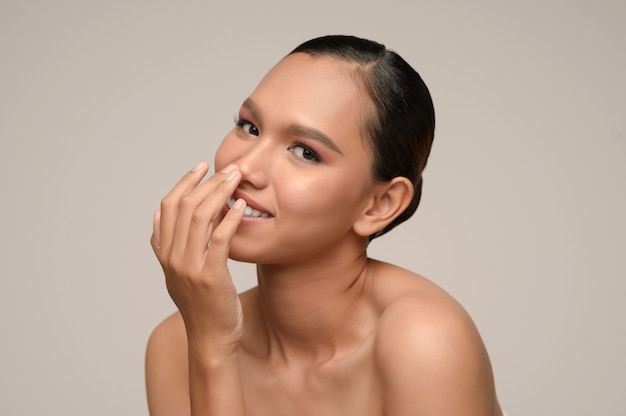Snoring is a common issue that affects many people and their loved ones. It often disrupts sleep quality, causing tiredness and frustration. While there are many reasons why snoring occurs, one effective way to address it is through Rhinoplasty Dubai. This surgical procedure, primarily known for enhancing the nose’s appearance, can also improve breathing and significantly reduce or eliminate snoring. This article explores how rhinoplasty helps with snoring and what individuals can expect from this approach.
Understanding Snoring and Its Causes
Snoring happens when the flow of air through the mouth and nose is partially obstructed during sleep. This obstruction causes the tissues in the throat and nasal passages to vibrate, creating the characteristic snoring sound. Several factors can contribute to snoring, including:
- Narrow nasal airways
- Deviated septum
- Enlarged nasal tissues
- Poor muscle tone in the throat
When nasal airflow is compromised, breathing becomes less efficient, increasing the likelihood of snoring. Improving nasal airflow is therefore a key strategy in managing snoring.
What Is Rhinoplasty?
Rhinoplasty is a surgical procedure that reshapes the nose. It can be performed for cosmetic reasons or to improve nasal function. In the context of snoring, the focus is on functional rhinoplasty. This type of surgery aims to correct structural problems inside the nose that interfere with airflow, such as a deviated septum or nasal valve collapse.
By opening up the nasal passages, rhinoplasty helps the individual breathe more easily through their nose, reducing the chances of mouth breathing—a common cause of snoring.
How Rhinoplasty Improves Breathing
Correcting a Deviated Septum
One of the most common reasons for nasal obstruction is a deviated septum. The septum is the cartilage and bone that divides the two nostrils. When it is crooked or off-center, it can block airflow on one or both sides of the nose. Rhinoplasty can straighten the septum, allowing for better airflow and reducing resistance that leads to snoring.
Enlarging Narrow Nasal Passages
Sometimes the nasal passages themselves are too narrow, either due to inherited anatomy or injury. Rhinoplasty can enlarge these passages by reshaping the bones or cartilage, making it easier for air to flow freely. This improvement directly impacts snoring by reducing vibration caused by restricted airflow.
Strengthening Nasal Valves
The nasal valves are the narrowest part of the nasal airway and are prone to collapsing inward during inhalation, especially during sleep. This collapse narrows the airway and triggers snoring. Rhinoplasty can reinforce and support the nasal valves, preventing collapse and helping maintain an open airway.
The Connection Between Nasal Breathing and Snoring
Breathing through the nose is important for quiet and efficient airflow. When nasal breathing is difficult, people often resort to breathing through the mouth. Mouth breathing can dry out the throat and increase tissue vibration, both of which worsen snoring. By improving nasal breathing through rhinoplasty, the need for mouth breathing is reduced, thus lowering the likelihood of snoring.
Benefits of Rhinoplasty for Snoring
- Improved Sleep Quality: Better airflow means less snoring, which leads to more restful and uninterrupted sleep for both the individual and their partner.
- Enhanced Nasal Function: Besides reducing snoring, functional rhinoplasty often results in easier breathing during daily activities.
- Increased Energy Levels: Quality sleep has a positive effect on overall energy and daytime alertness.
- Boosted Confidence: Although not the primary goal, many experience improved self-esteem due to the cosmetic benefits of rhinoplasty.
What to Expect During the Rhinoplasty Process
The rhinoplasty procedure for snoring usually involves a detailed evaluation of nasal structure and airflow. This may include a physical exam and sometimes imaging studies. The surgery itself typically focuses on straightening the septum, widening the nasal passages, or reinforcing the nasal valves depending on the specific cause of obstruction.
Recovery times vary, but most individuals return to normal activities within a few weeks. During this period, breathing gradually improves as swelling decreases.
Frequently Asked Questions About Rhinoplasty and Snoring
Will rhinoplasty completely cure snoring?
Rhinoplasty can greatly reduce or eliminate snoring caused by nasal obstruction. However, snoring can have multiple causes, so it may not resolve all cases completely. It is often part of a broader approach to managing snoring.
Is rhinoplasty only for cosmetic purposes?
No. While rhinoplasty is often chosen for aesthetic reasons, functional rhinoplasty focuses on improving nasal breathing and can significantly help with snoring.
How long does it take to see improvement in snoring after rhinoplasty?
Many patients notice an improvement in nasal airflow soon after surgery, but full results may take a few weeks as swelling subsides.
Can rhinoplasty help with sleep apnea?
Rhinoplasty can help improve nasal breathing, which may benefit some cases of mild sleep apnea. However, more severe cases often require additional treatments.
Is the procedure painful?
Most patients report manageable discomfort during the recovery period. Any soreness is usually temporary and can be controlled with standard pain management.
Additional Considerations
It is important for individuals considering rhinoplasty for snoring to undergo a thorough evaluation to identify the specific cause of their snoring. This ensures that the surgery targets the right structural issues. A multidisciplinary approach may sometimes be needed if other factors like throat tissue vibration also contribute.
Conclusion
Rhinoplasty offers a promising solution for those struggling with snoring due to nasal obstruction. By improving airflow through the Nose Job in Dubai, this procedure reduces the vibration that causes snoring, enhancing sleep quality and overall well-being. Though primarily known as a cosmetic surgery, rhinoplasty’s functional benefits make it a valuable option for snoring relief. Understanding the connection between nasal structure and snoring helps people make informed decisions about their treatment options.









